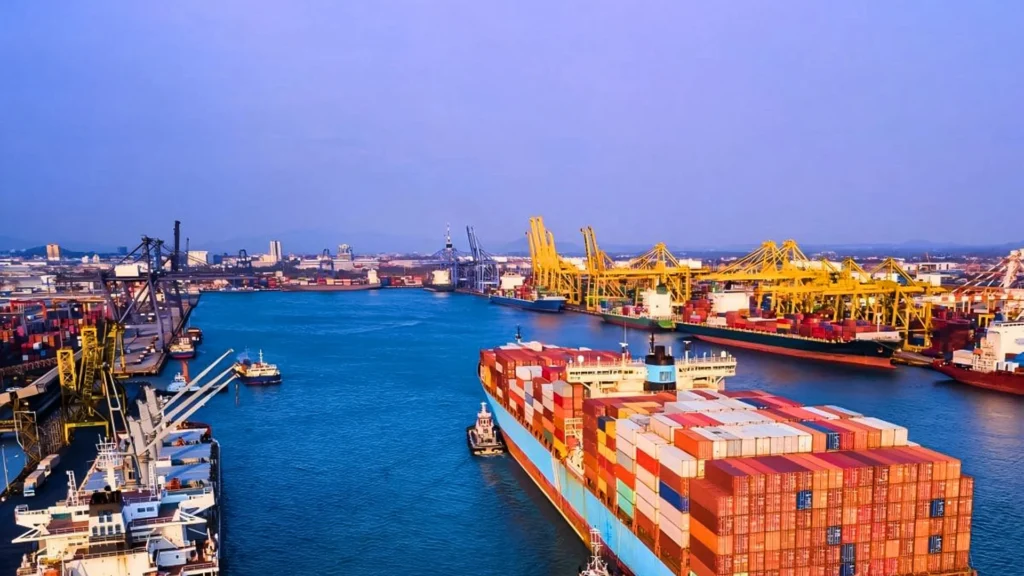5 Kantung Udara Penyelamatan Laut yang Paling Umum
07/29/2025Apa tujuan dari kapal tunda?
07/30/2025Sepuluh pelabuhan tersibuk di dunia
Pendahuluan
Pelabuhan peti kemas tersibuk di dunia menangani kargo dalam jumlah besar setiap tahun. Di balik layar, sistem fender memainkan peran kunci. Fender ini berfungsi sebagai penyangga antara kapal dan dermaga, mencegah kerusakan dan memastikan semuanya berjalan dengan aman dan lancar.
Di pelabuhan utama seperti Shanghai, Singapura, dan Ningbo-Zhoushan, kapal-kapal berlabuh secara konstan-banyak di antaranya adalah kapal kontainer besar. Gaya dari sandar bisa sangat kuat, dan kondisi laut sering berubah. Itulah sebabnya setiap pelabuhan dengan hati-hati memilih fender yang sesuai dengan ukuran kapal, bentuk tempat berlabuh, dan kondisi setempat. Jenis yang paling umum termasuk fender kerucut, fender sel, fender lengkung, dan fender pneumatik (Yokohama).
Dalam artikel ini, kita akan mengeksplorasi bagaimana 10 pelabuhan tersibuk di dunia menggunakan berbagai jenis sistem fender untuk mendukung operasi yang aman dan efisien.

Apa Itu Sistem Fender?
Sistem fender adalah perangkat pelindung yang dipasang di sepanjang dermaga dan dermaga. Sistem ini menyerap benturan saat kapal masuk ke dermaga, melindungi lambung kapal dan struktur pelabuhan.
Berikut ini adalah jenis utama spatbor yang digunakan saat ini:
- Fender kerucut dan fender sel: Menangani beban energi yang besar, ideal untuk kapal besar.
- Fender silinder: Desain sederhana, bagus untuk penggunaan umum.
- Fender lengkung: Gaya reaksi rendah, sering digunakan di terminal peti kemas.
- Fender pneumatik (Yokohama): Berisi udara, mengapung di atas air, fleksibel untuk penggunaan di kapal atau lepas pantai.
Banyak pelabuhan sekarang menggunakan bahan modern seperti karet atau plastik UHMW-PE, dan beberapa bahkan menyematkan sensor ke dalam spatbornya untuk memantau tekanan dan pergerakan secara real time.
10 Pelabuhan Peti Kemas Tersibuk (2023/2024)
| Peringkat | Pelabuhan | Negara | 2024 TEU (Jutaan) | Status 2025 |
|---|---|---|---|---|
| 1 | Shanghai | Cina | 51.506 | Pelabuhan pertama yang melewati batas 50 M TEU |
| 2 | Singapura | Singapura | 41.124 | Masih kuat setelah sedikit pertumbuhan |
| 3 | Ningbo-Zhoushan | Cina | 39.301 | Melonjak dengan cepat; hampir menyusul Singapura |
| 4 | Shenzhen | Cina | 33.399 | Tumbuh dengan baik;> 33 M TEU |
| 5 | Guangzhou | Cina | ~25.41 | Pulih dengan mantap; ~ 3,9% pertumbuhan |
| 6 | Qingdao | Cina | ~30.87 (≈28.77) | Sekitar 30+ M TEU pada tahun 2024 |
| 7 | Busan | Korea Selatan | 23.04 | Mempertahankan posisinya |
| 8 | Tianjin | Cina | ~15-16 | Dalam kisaran 10 besar |
| 9 | Hong Kong | Cina | 13.69 | Keluar dari 10 besar; lalu lintas menurun |
| 10 | Los Angeles/Long Beach | AMERIKA SERIKAT | 5,36 (LA saja) | Terbesar di A.S.; mendekati 20 M untuk sistem gabungan |
Sistem Fender di Setiap Pelabuhan
1. Pelabuhan Shanghai
Shanghai adalah pelabuhan tersibuk di dunia. Pelabuhan ini menggunakan fender kerucut dan fender sel-ideal untuk menangani kapal besar dan gaya docking yang kuat. Di Pelabuhan Air Dalam Yangshan, spatbor karet berkinerja tinggi melindungi dermaga dari benturan dan keausan.
2. Pelabuhan Singapura
Singapura merupakan hub utama dengan banyak jenis kapal. Ia menggunakan campuran dari silinder, seldan fender lengkung. Untuk tempat berlabuh apung dan transfer antar-kapal, fender pneumatik adalah hal yang umum.
3. Pelabuhan Ningbo-Zhoushan
Seiring bertambahnya ukuran kapal, Ningbo-Zhoushan melengkapi dermaganya dengan kerucut dan fender sel untuk meredam benturan keras. Fender ini membantu pelabuhan menangani kapal kontainer besar dengan aman.
4. Pelabuhan Shenzhen
Shenzhen memiliki lebih dari 140 tempat berlabuh dan menangani lalu lintas kapal yang tinggi. Pelabuhan ini terutama menggunakan fender lengkung, fender silinderdan fender sel untuk mendukung operasi docking yang sering dilakukan.
5. Pelabuhan Guangzhou
Terletak di Delta Sungai Pearl, Guangzhou menggunakan berbagai fender, termasuk silinder, seldan jenis lengkungan. Pelabuhan memilih fender berdasarkan ukuran dan jenis kapal yang berlabuh di setiap dermaga.
6-10: Pelabuhan Busan, Tianjin, Hong Kong, Qingdao, dan A.S.
Port ini juga menggunakan kualitas tinggi kerucut, sel, lengkungandan fender pneumatik.
- Busan dan Qingdao melayani banyak kapal besar dan menggunakan sistem fender tugas berat.
- Tianjin dan Hong Kong memadukan spatbor tetap dengan spatbor apung agar sesuai dengan kedalaman tempat berlabuh dan ukuran kapal yang bervariasi.
- Los Angeles/Long Beach berinvestasi pada fender karet modern untuk docking yang aman di zona lalu lintas tinggi.
Tren Fender Regional
- Pelabuhan Cina mengandalkan kerucut dan fender sel untuk menangani kapal berukuran super.
- Singapura dan Hong Kong menggunakan kombinasi fleksibel dari lengkungan dan fender pneumatik untuk kondisi tempat berlabuh yang berbeda.
- Pelabuhan Eropaseperti Rotterdam, memimpin dalam fender pintar-fender plastik dengan sensor yang mengumpulkan data benturan secara real-time.
- Pelabuhan Amerika juga meningkatkan ke fender karet dan plastik yang lebih kuat dan tahan lama untuk memenuhi permintaan yang terus meningkat.
Melihat ke Depan
Masa depan sistem fender pelabuhan terletak pada solusi yang lebih cerdas, lebih aman, dan lebih ramah lingkungan. Inilah yang akan terjadi selanjutnya:
- Desain khusus: Pelabuhan memilih fender berdasarkan bentuk dermaga, pasang surut, ukuran kapal, dan sudut berlabuh.
- Teknologi sensor: Fender modern dapat mengumpulkan data benturan, membantu operator memantau docking secara real time.
- Bahan yang ramah lingkungan: Spatbor plastik lebih tahan lama, tahan aus, dan lebih mudah dirawat.
- Lebih banyak fleksibilitas: Seiring dengan pergeseran rute perdagangan global, pelabuhan membutuhkan sistem fender yang dapat beradaptasi dengan cepat.
Kesimpulan
Karena pelayaran global terus berkembang, pelabuhan harus mempersiapkan diri untuk kapal yang lebih banyak dan lebih besar. Sistem fender memainkan peran penting dalam menjaga agar docking tetap aman dan efisien. Dari fender kerucut dan sel di Shanghai hingga fender pneumatik di Singapura, setiap pelabuhan memilih yang paling sesuai dengan kebutuhannya.
Sistem fender yang baik mencegah kerusakan, melindungi infrastruktur, dan mendukung kelancaran operasi. Dan seiring dengan perkembangan kapal, fender juga harus berevolusi - lebih cerdas, lebih kuat, dan lebih berkelanjutan.
Jangan lupa: di balik setiap pelabuhan yang sibuk, ada sistem fender yang bekerja keras melakukan tugasnya dengan tenang dan andal.
